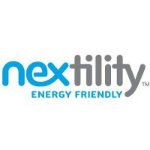
Why we need to stop talking in terms of carbon, and why we need to start talking in dollars to make sense.
Back in 2012, I attended the Energy Efficiency Forum in DC, which was a day-long event featuring mayor’s speaking about their city-wide initiatives, White House representatives talking about Presidential-backed programs, and CEO’s discussing their newest certification award. To be honest, it was a parade of positivity, each boasting their own program but not really saying much.
Enter: The Empire State Building
As the day was coming to a close, the final speaker stepped up to the podium, Anthony Malkin, owner of the Empire State Building and President of Malkin Holdings. His speech was blunt, insightful, and much needed. Mr. Malkin cut through the non-performance based certification programs, he disregarded the bottle-neck processes of new policy, and not once did he talk about polar bears.
During his speech, several attendees walked out of the room because of their differences in opinion. Or maybe because he was nearly pointing at each of them and telling them what was wrong with their program. Either way, Mr. Malkin wasn’t talking about a bizarre new idea; he was talking about something we all know very well – money. And even though he was talking about energy efficiency for large, commercial buildings, the message holds true for all sizes of business – especially small businesses.
Here is what Mr. Malkin had to say about energy efficiency retrofits and upgrades:
“An investment with a return, that’s what this is about. This is about co-leveraging capital and pointing out to people a better way to do business, a better way to make money. It is insane to me, absolutely insane, that energy can be expensed on your bill, but investing in an energy efficiency retrofit against your taxes has to be capitalized and depreciated over time. It is insane to me that we are providing all of these incentives for alternative energy for windmills and solar, the majority of which are imported from overseas, when energy efficiency retrofits which provide local jobs and local continent to the economy get zero benefit. And not only do they save cost, they avoid capital cost, because if we reduce the top 25% by number of energy bills in NYC, utility bills, you’ll cut total energy in NYC by about 15% and then you don’t need all of those replacement, augmented sources of energy production until they make the same cost per watt as the cost of a negawatt.”
Investments.
That’s how Mr. Malkin views energy efficiency upgrades and retrofits. That’s how the Empire State Building will cut energy consumption by 38% and save $4.4 million annually. And that’s how the Empire State Building has become THE industry case study for how to do energy efficiency retrofits the right way.
 If an energy efficiency upgrade doesn’t have a financial benefit, then it most likely will not have a positive environmental impact. We need to approach every upgrade or retrofit as an investment. What is the payback period? What kind of return will it yield? Just remember, the more a business’s bottom line benefits from energy efficiency upgrades, the more the environment and the planet benefits.
If an energy efficiency upgrade doesn’t have a financial benefit, then it most likely will not have a positive environmental impact. We need to approach every upgrade or retrofit as an investment. What is the payback period? What kind of return will it yield? Just remember, the more a business’s bottom line benefits from energy efficiency upgrades, the more the environment and the planet benefits.
Energy efficiency is the most proven, cost-effective, readily-available technology on the market. So let’s stop talking about carbon and polar bears and instead find common ground on the subject of financial returns and smarter business. We’ll accomplish the same mission, only with greater support, less arguments, and fewer polar bear costumes.





